Cows Have a Methane Problem. Dairy Farmers are Hoping New Innovations Can Help
Methane is 25 times as potent as carbon dioxide when it comes to trapping heat in the atmosphere, and a single cow can belch 220 pounds of it every year.
Cows Have a Methane Problem. Dairy Farmers are Hoping New Innovations Can Help
Methane is 25 times as potent as carbon dioxide when it comes to trapping heat in the atmosphere, and a single cow can belch 220 pounds of it every year.

Cows on Samantha Craun's farmcourtesy of the Dairy Alliance
Samantha Craun oversees 1,200 acres and roughly 900 cows at her farm in eastern Tennessee. She took over Davis Brothers Dairy from her father and uncle, and it’s a lot of work. She grows all the forage the cows eat, so between growing her grain and tending to her animals, she’s nearly always busy. But she starts every day the same way: running through data.
“I look at what came in overnight and I make a game plan for the day,” says Craun. “Maybe that’s to move some cows around, like ‘these five cows look like they’re sick.’”
Craun isn’t just documenting which cows look a little peaky through visual inspections alone. She uses rumination collars, which act kind of like an activity tracker for the cows. Similar to how a Fitbit or fitness watch keeps track of your steps or heartbeat, Craun can monitor each cow’s vital stats individually. “We know how many steps she takes in a day. We know what her rumination is for the day—that’s monitored in minutes per day. If she falls below a threshold, we know something’s probably wrong with her and she’s not feeling well,” says Craun. Cows also pant like dogs to cool down, and the collars will record how much panting occurs. “If she has a lot of time panting, then you know she’s not getting cooled off for some reason.”
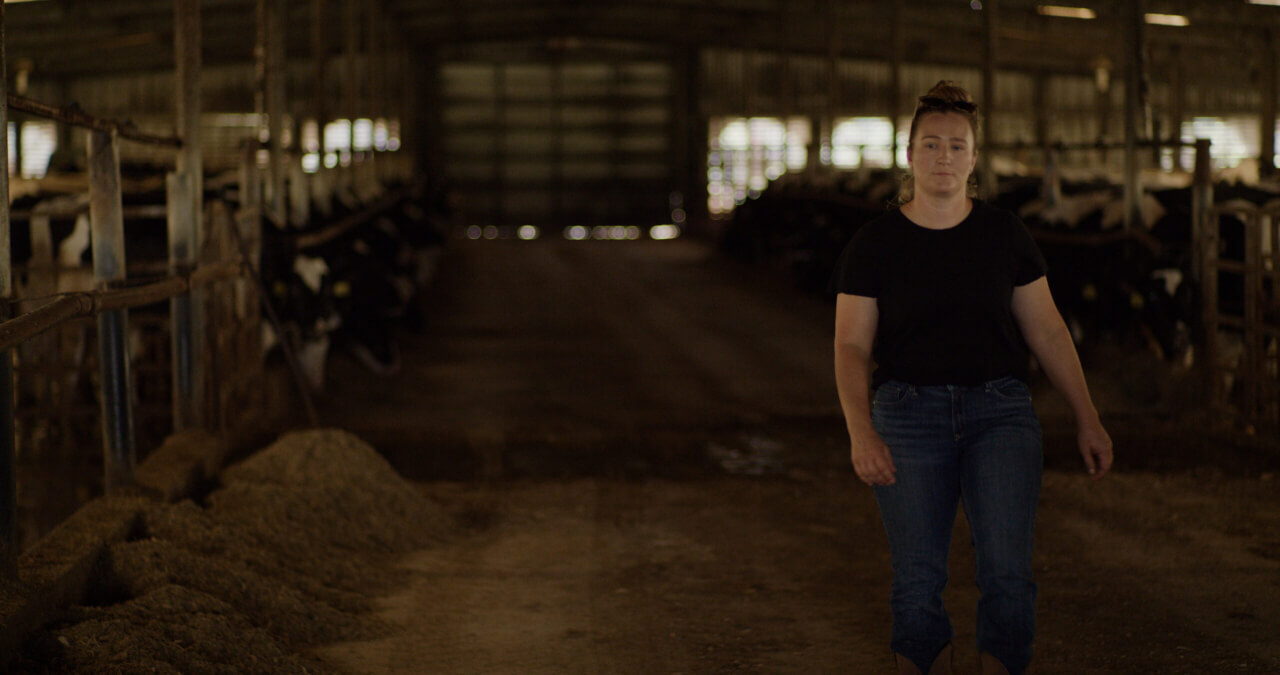
Craun keeps track of all of these data points for more than just the health of her herd. She’s one of many dairy farmers looking for a way to reduce the amount of methane emitted at her farm. Methane, a greenhouse gas, accounts for about 20 percent of global emissions. It’s also 25 times stronger than carbon dioxide at trapping heat in the atmosphere. Methane contributes to ozone air pollution, and it is linked to one million premature deaths every year. The UN estimates that meeting methane reduction targets would result in fewer hospitalizations and deaths, fewer lost work hours and prevent 25 million tonnes of crop losses. Reducing our methane emissions is crucial to global health.
In the US, agriculture accounts for 25 percent of all methane emissions, with cattle making up more than 85 percent of those emissions. On average, a healthy dairy cow will emit—mostly through burps—about 220 pounds of methane each year.
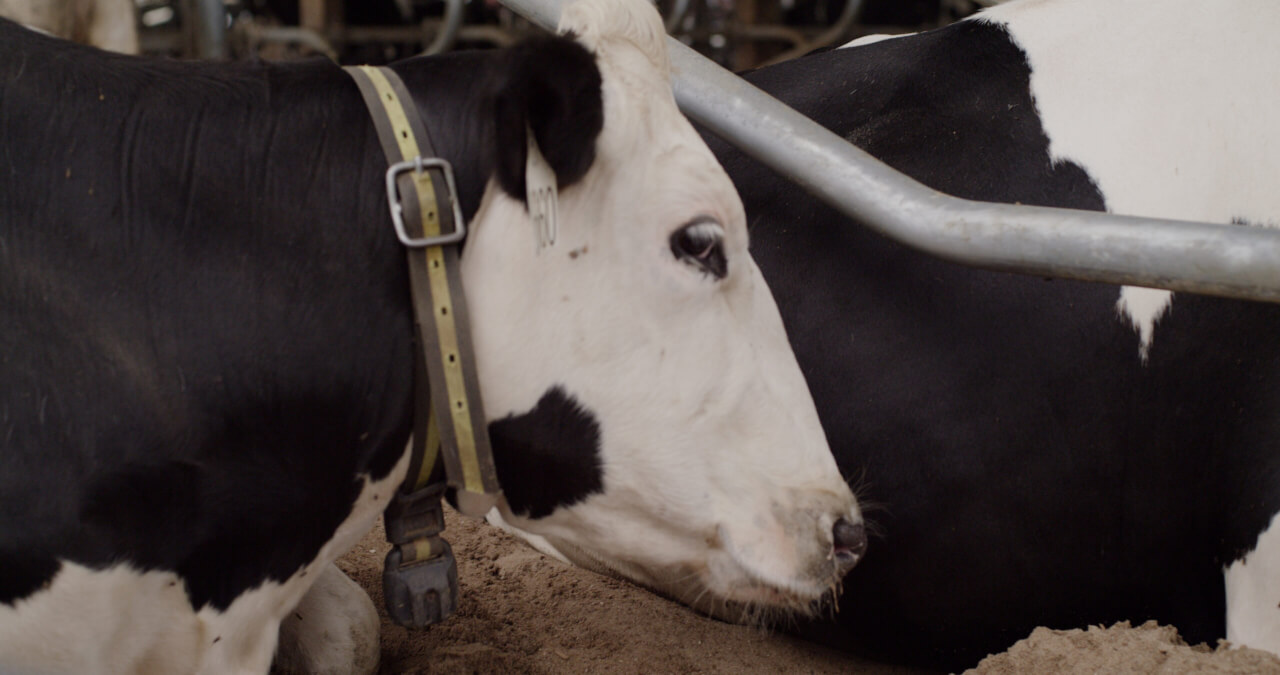
But there are ways to try and bring that number down, like Craun and her collars. Think of it like this: A dairy cow can produce about seven gallons of milk each day. But as she’s eating and ruminating and milking, that cow is also belching up that methane. So each gallon of milk produced also produces methane.
If a cow gets sick, she might have to go on antibiotics or other medication, which removes her milk from the usable supply for a time. That means she’s still burping away, but her per-gallon emissions are skyrocketing. But if a farmer can catch an illness before it gets to that point, and they can work to prevent that cow getting sick, they’ve just kept their per-gallon emission level steady—and over time, farmers like Craun are hoping those numbers will continue to drop.
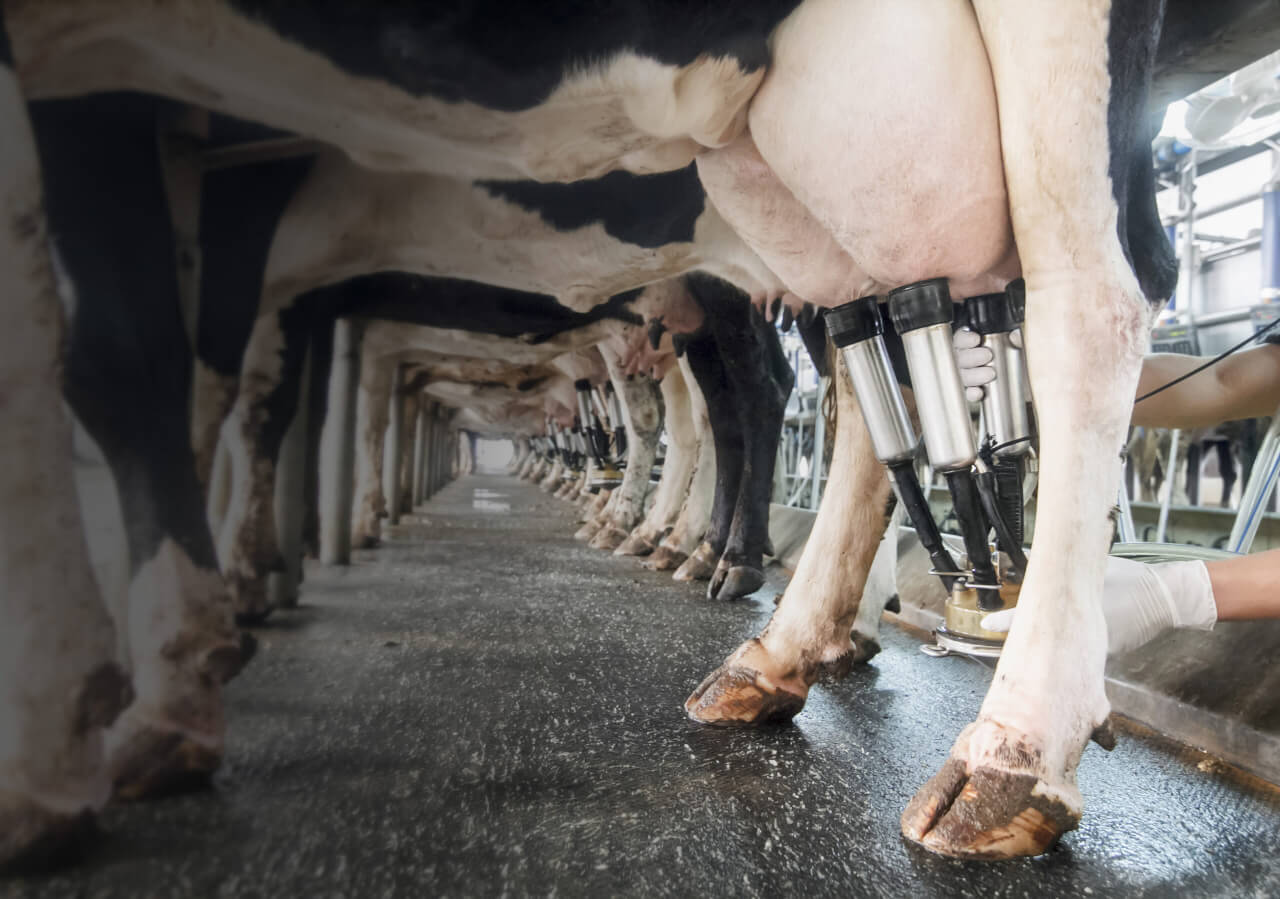
Some farmers are tracking the same kind of data Craun is, but they’re getting even deeper—right into the cow’s stomach. The smaXtec bolus is a small sensor that the cow swallows, and it measures her internal temperature, rumination and water intake. It sends the data to a base station, and then an algorithm analyzes the individual cow’s health, comparing it to the herd as a whole.
Stefan Scherer, CEO of smaXtec, says the technology helps farmers become more proactive, and it gives them the ability to detect diseases about five days before cows develop clinical symptoms. This allows the farmer to support the immune system in other ways, such as using anti-inflammatories or nutritional supplements, without relying on harsher medications. “We can reduce antibiotic usage up to 70 percent…therefore, we make the whole herd more efficient. And the research has proven a 14- or 15-percent methane reduction.”
Of course, there are the cow’s burps, and then there is…the stuff that comes out of the other end. Cow manure is made up of roughly 65 percent methane. In the air around us all the time, methane is a little less than two parts per million. “In a typical dairy barn, it’s about 100 to 200 parts per million,” says Josh Silverman, CEO of Windfall Bio, a startup working to transform that methane into fertilizer. If methane is more prominent inside the barn, it’s the most active near manure lagoons or slurry pits, where many dairy farms pool the waste. “If you go out and look, it’s just bubbling up methane… you might get a few thousand parts per million [of methane] coming off of those manure lagoons.”

Silverman aims to turn all that methane right back into nitrogen-rich fertilizer, helping farmers reduce their costs and find a use for a literal waste product. He does that using bacteria called methanotroph, or methane-eating microbes (Windfall Bio is calling them MEMs for short). These MEMs occur naturally in soil, enriching it as they pull methane and nitrogen out of the air and sink it into the ground. “What we’re trying to do is help those farmers close that loop and become more efficient. Right now, if they don’t have a path to capture that methane, they’re just venting it into the atmosphere, because they have nothing else to do with it,” says Silverman. But with MEMs, farmers can get dried and powdered forms of these bacteria (like a packet of yeast that activates when you bake bread) to mix in with their compost pile, making it much more efficient at using up the methane that’s coming off of the existing manure. Silverman says they’re still gathering data, but current models suggest that, over one to two months, the MEMs can double the amount of nitrogen in compost.
“This is really equitable technology. So you don’t have to spend hundreds of thousands of dollars on fancy stainless steel equipment and fans and electricity; this actually works incredibly well down to 10 cow farms [or] 100,000 head farms,” says Silverman.
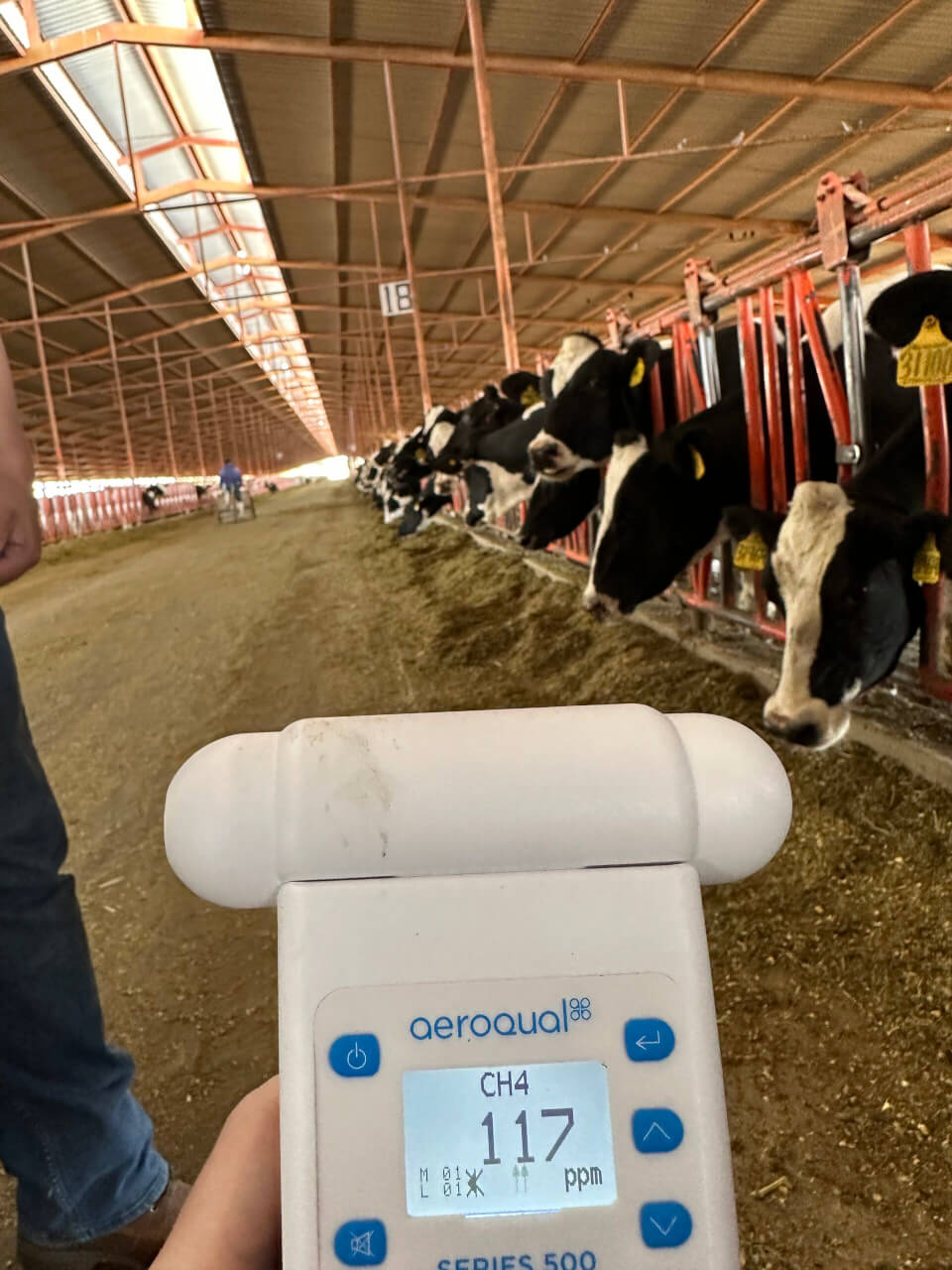
Farmers are already experimenting with other low-tech solutions. Changing up cattle feed to include seaweed or supplements can reduce the amount a cow burps and the methane they expel. Craun pays particular focus on keeping her cows cool, even retrofitting her barn to include soakers: spray nozzles that soak the cows’ backs with water to keep them regulated. “If a cow is hot, she’s stressed,” says Craun. But in the barns with soakers, “it makes a huge difference.” Craun says she’s noticed jumps of more than a gallon of extra milk per day from the cooled-down cows.
The US is one of 100 countries signed on to the Global Methane Pledge; the goal is to reduce methane levels by 30 percent by 2030. It’s necessary to keep global warming to 1.5 degrees, the threshold identified by scientists as crucial to averting the worst outcomes of climate change. Last year, President Biden introduced the Methane Emissions Reduction Action Plan, which, among other programs, pledged $47 million this spring to projects that will mitigate methane emissions. That all sounds good on paper, but the projects are all still in the research phase. Nothing tangible is yet being put into practice at a wide scale.
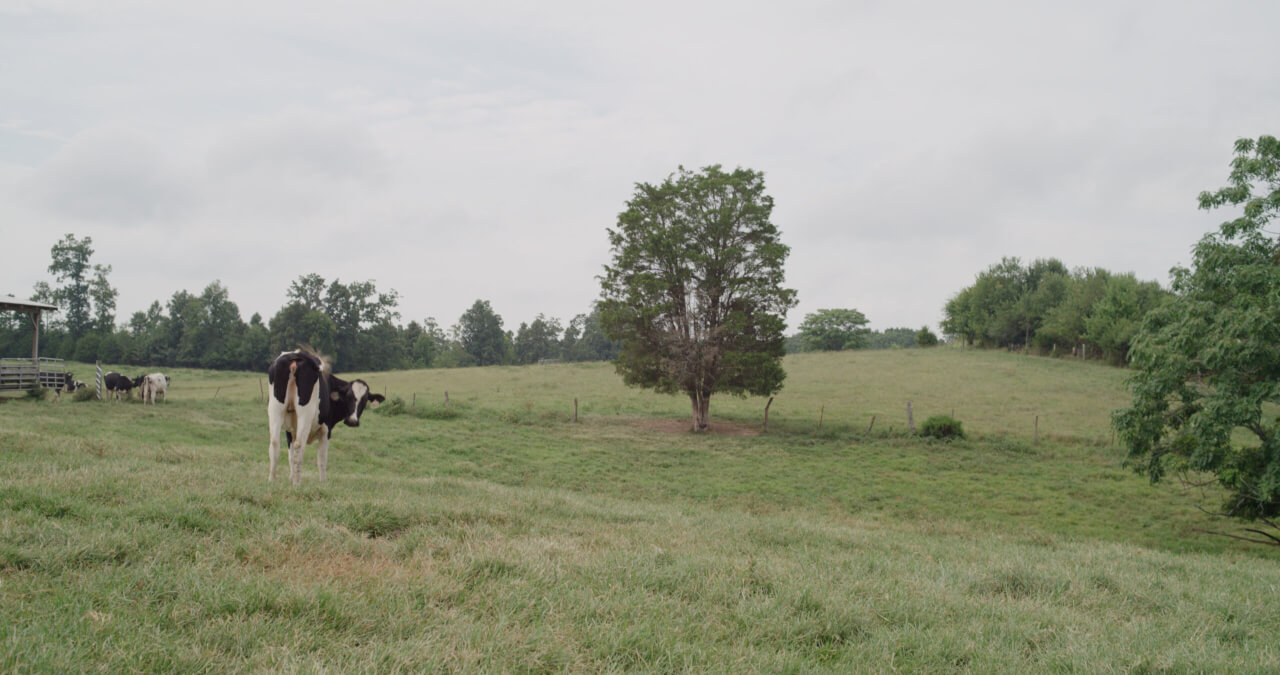
Ultimately, though, will any of this make a difference? If dairy farms are still producing the same amount of methane for a larger amount of milk, the net environmental impact remains unchanged. There are calls for more stringent taxes and fees on methane emitters. There is also the argument that humans should stop eating beef or drinking milk altogether; that it would be better to remove cattle entirely from the agricultural system. Some research shows that removing cattle from US agriculture would increase food production and decrease agricultural emissions, but not by as much as one would think. In that model, total US greenhouse emissions dropped by only 2.6 percent when cows were excluded from the equation.
The changes the dairy industry is attempting could be viewed through two lenses: Every little bit helps or it’s too little too late. But, unlike carbon dioxide, which sticks around in the atmosphere for hundreds of years, methane can break down in just a decade, which means that practices put into place today could pay off by 2033.
Follow us
This work is licensed under a Creative Commons Attribution-NoDerivatives 4.0 International License.
Want to republish a Modern Farmer story?
We are happy for Modern Farmer stories to be shared, and encourage you to republish our articles for your audience. When doing so, we ask that you follow these guidelines:
Please credit us and our writers
For the author byline, please use “Author Name, Modern Farmer.” At the top of our stories, if on the web, please include this text and link: “This story was originally published by Modern Farmer.”
Please make sure to include a link back to either our home page or the article URL.
At the bottom of the story, please include the following text:
“Modern Farmer is a nonprofit initiative dedicated to raising awareness and catalyzing action at the intersection of food, agriculture, and society. Read more at <link>Modern Farmer</link>.”
Use our widget
We’d like to be able to track our stories, so we ask that if you republish our content, you do so using our widget (located on the left hand side of the article). The HTML code has a built-in tracker that tells us the data and domain where the story was published, as well as view counts.
Check the image requirements
It’s your responsibility to confirm you're licensed to republish images in our articles. Some images, such as those from commercial providers, don't allow their images to be republished without permission or payment. Copyright terms are generally listed in the image caption and attribution. You are welcome to omit our images or substitute with your own. Charts and interactive graphics follow the same rules.
Don’t change too much. Or, ask us first.
Articles must be republished in their entirety. It’s okay to change references to time (“today” to “yesterday”) or location (“Iowa City, IA” to “here”). But please keep everything else the same.
If you feel strongly that a more material edit needs to be made, get in touch with us at [email protected]. We’re happy to discuss it with the original author, but we must have prior approval for changes before publication.
Special cases
Extracts. You may run the first few lines or paragraphs of the article and then say: “Read the full article at Modern Farmer” with a link back to the original article.
Quotes. You may quote authors provided you include a link back to the article URL.
Translations. These require writer approval. To inquire about translation of a Modern Farmer article, contact us at [email protected]
Signed consent / copyright release forms. These are not required, provided you are following these guidelines.
Print. Articles can be republished in print under these same rules, with the exception that you do not need to include the links.
Tag us
When sharing the story on social media, please tag us using the following: - Twitter (@ModFarm) - Facebook (@ModernFarmerMedia) - Instagram (@modfarm)
Use our content respectfully
Modern Farmer is a nonprofit and as such we share our content for free and in good faith in order to reach new audiences. Respectfully,
No selling ads against our stories. It’s okay to put our stories on pages with ads.
Don’t republish our material wholesale, or automatically; you need to select stories to be republished individually.
You have no rights to sell, license, syndicate, or otherwise represent yourself as the authorized owner of our material to any third parties. This means that you cannot actively publish or submit our work for syndication to third party platforms or apps like Apple News or Google News. We understand that publishers cannot fully control when certain third parties automatically summarize or crawl content from publishers’ own sites.
Keep in touch
We want to hear from you if you love Modern Farmer content, have a collaboration idea, or anything else to share. As a nonprofit outlet, we work in service of our community and are always open to comments, feedback, and ideas. Contact us at [email protected].by Emily Baron Cadloff, Modern Farmer
June 8, 2023
Modern Farmer Weekly
Solutions Hub
Innovations, ideas and inspiration. Actionable solutions for a resilient food system.
ExploreExplore other topics
Share With Us
We want to hear from Modern Farmer readers who have thoughtful commentary, actionable solutions, or helpful ideas to share.
SubmitNecessary cookies are absolutely essential for the website to function properly. This category only includes cookies that ensures basic functionalities and security features of the website. These cookies do not store any personal information.
Any cookies that may not be particularly necessary for the website to function and are used specifically to collect user personal data via analytics, ads, other embedded contents are termed as non-necessary cookies.
Given that “Methane is 25 times as potent as carbon dioxide when it comes to trapping heat in the atmosphere” How much global warming is it on track to produce by 2100 or in 100 years or if the amount in the atmosphere doubles? If you search the internet for an answer to that question, you will likely come up empty. The answer is: Not very much, so little that it would essentially be unmeasurable, maybe as much as 0.05°C by 2100. If anyone claims it’s more than that, they need to show their work.